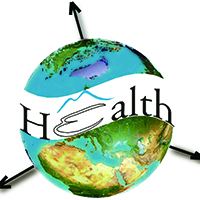Choice of unmanned aerial vehicles for identification of mosquito breeding sites

All claims expressed in this article are solely those of the authors and do not necessarily represent those of their affiliated organizations, or those of the publisher, the editors and the reviewers. Any product that may be evaluated in this article or claim that may be made by its manufacturer is not guaranteed or endorsed by the publisher.
Authors
The disordered urban growth that may favour the emergence of the Aedes aegypti mosquito in cities is a problem of increasing magnitude in middle- and high-income countries in the tropical part of the world. Currently, the World Health Organization (WHO) considers the control and elimination of Ae. aegypti a world-wide high priority as it is the main vector of many rapidly spreading viral diseases, dengue in particular. A major difficulty in controlling the proliferation of this vector is associated with identification of the breeding sites. The use of Unmanned Aerial Vehicles (UAVs) can be an efficient alternative to manual search because of high mobility and the ability to overcome physical obstacles, particularly in urban areas where it can offer close-up images of potential breeding sites that are difficult to reach. The objective of this study was to find a way to select the most suitable UAV for the identification of Ae. aegypti habitats by providing images of potential mosquito breeding sites. This can be accomplished by a Multiple-Criteria Decision Method (MCDM) based on an Analytical Hierarchy Process (AHP) for the evaluation of weights of the criteria used for characterizing UAVs. The alternatives were analyzed and ranked using the Fuzzy Set Theory (FST) merged with the Technique for Order of Preference by Similarity to Ideal Solution (TOPSIS). The methodology is explained and discussed with respect to identification and selection of the most appropriate UAV for aerial mapping of Aedes breeding sites.
Supporting Agencies
Coordenação de Aperfeiçoamento de Pessoal de NÃvel Superior - Brasil (CAPES).How to Cite
PAGEPress has chosen to apply the Creative Commons Attribution NonCommercial 4.0 International License (CC BY-NC 4.0) to all manuscripts to be published.













